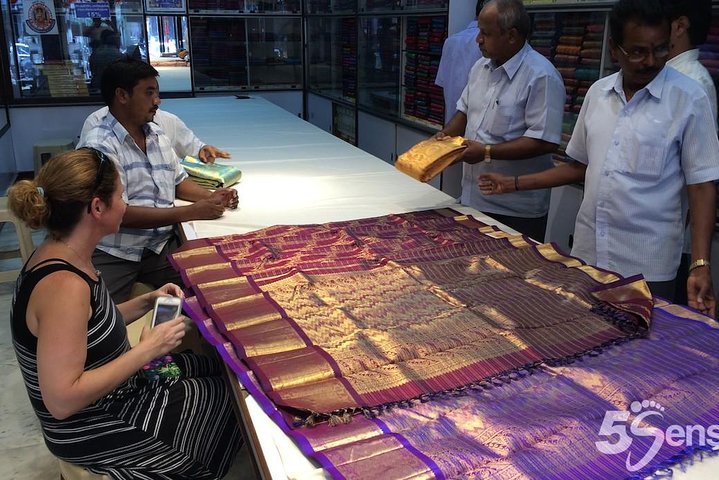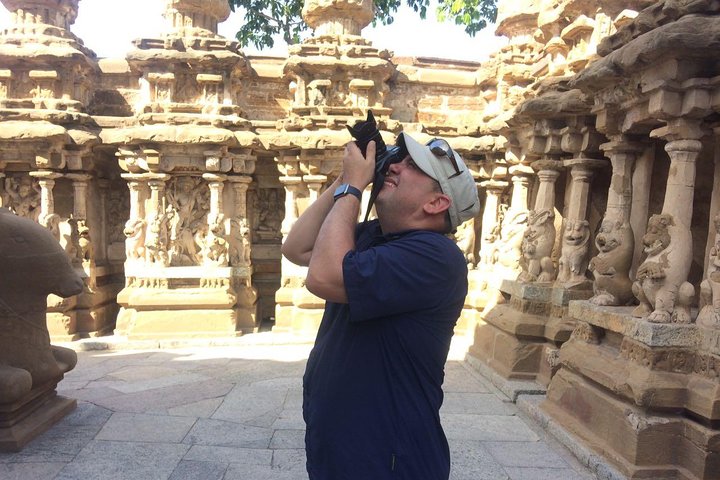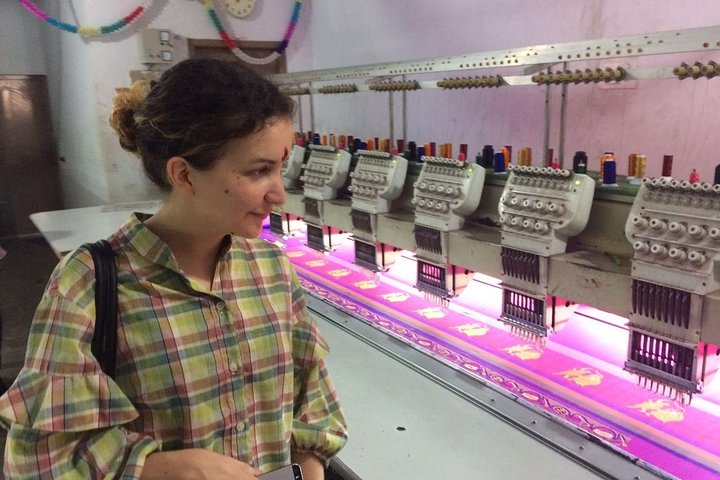Exploring the Spiritual and Artistic Heritage of Kanchipuram
Intrigued by the rich history and cultural significance of Kanchipuram, I embarked on a journey to explore its ancient temples and the art of silk saree weaving. Join me as I delve into the spiritual and artistic heritage of this remarkable town.
A Journey Through Time: The Temples of Kanchipuram
As I embarked on my journey to Kanchipuram, a town steeped in history and spirituality, I was filled with anticipation. Known as the city of a thousand temples, Kanchipuram is a place where the past and present coexist in harmony. My first stop was the Kailasanathar Temple, a magnificent structure built in the 7th century AD by the Pallava king Narasimhavarman II. The temple’s Vimana and gopuram over the Sanctum Sanctorum are architectural marvels that left me in awe. The intricate carvings and sculptures tell stories of a bygone era, and as I walked through the temple, I felt a deep connection to the ancient traditions that have been preserved here.
Next, I visited the Ekambareswarar Temple, a testament to the architectural prowess of the Pallava and Chola dynasties. The temple’s Raja gopuram, one of the tallest in South India, and the Aayiram Kaal Mandapam, or the “hallway with a thousand pillars,” are truly remarkable. As I explored the temple, I was captivated by the legends and lore surrounding it, including the story of how Lord Shiva tested the dedication of Goddess Parvati. The spiritual energy of the place was palpable, and I found myself lost in contemplation, reflecting on the rich cultural heritage of this sacred town.
The Art of Silk Saree Weaving
Kanchipuram is not only famous for its temples but also for its exquisite silk sarees. The art of silk saree weaving has been passed down through generations, and I had the opportunity to meet a local weaver who shared the secrets of this ancient craft. Watching the weaver at work was a mesmerizing experience. The intricate patterns and vibrant colors of the sarees are a testament to the skill and dedication of the artisans. I learned about the different materials used, including gold thread, and the meticulous process involved in creating these beautiful garments.
The weaver explained how each saree is a labor of love, taking weeks to complete. As I admired the finished products, I couldn’t help but appreciate the cultural significance of the saree in Indian society. It is not just a piece of clothing but a symbol of tradition and identity. The visit to the weaver’s workshop was a highlight of my trip, and it gave me a deeper understanding of the artistry and craftsmanship that goes into making Kanchipuram silk sarees.
A Culinary Delight
No trip to Kanchipuram would be complete without indulging in the local cuisine. The town is home to numerous vegetarian restaurants, offering a variety of delicious dishes. I savored the flavors of idly, dosa, and sambar, each bite a delightful explosion of taste. The food in Kanchipuram is not only delicious but also a reflection of the region’s rich culinary heritage.
As I sat in a quaint restaurant, enjoying my meal, I couldn’t help but feel a sense of contentment. The warmth and hospitality of the people, the spiritual ambiance of the temples, and the vibrant culture of Kanchipuram had left a lasting impression on me. My journey to this historic town was a truly enriching experience, and I left with a newfound appreciation for the traditions and customs that make Kanchipuram a unique and fascinating destination.







































